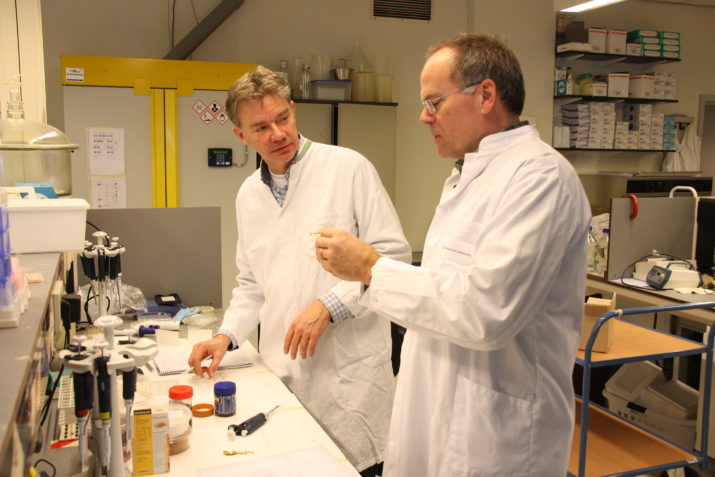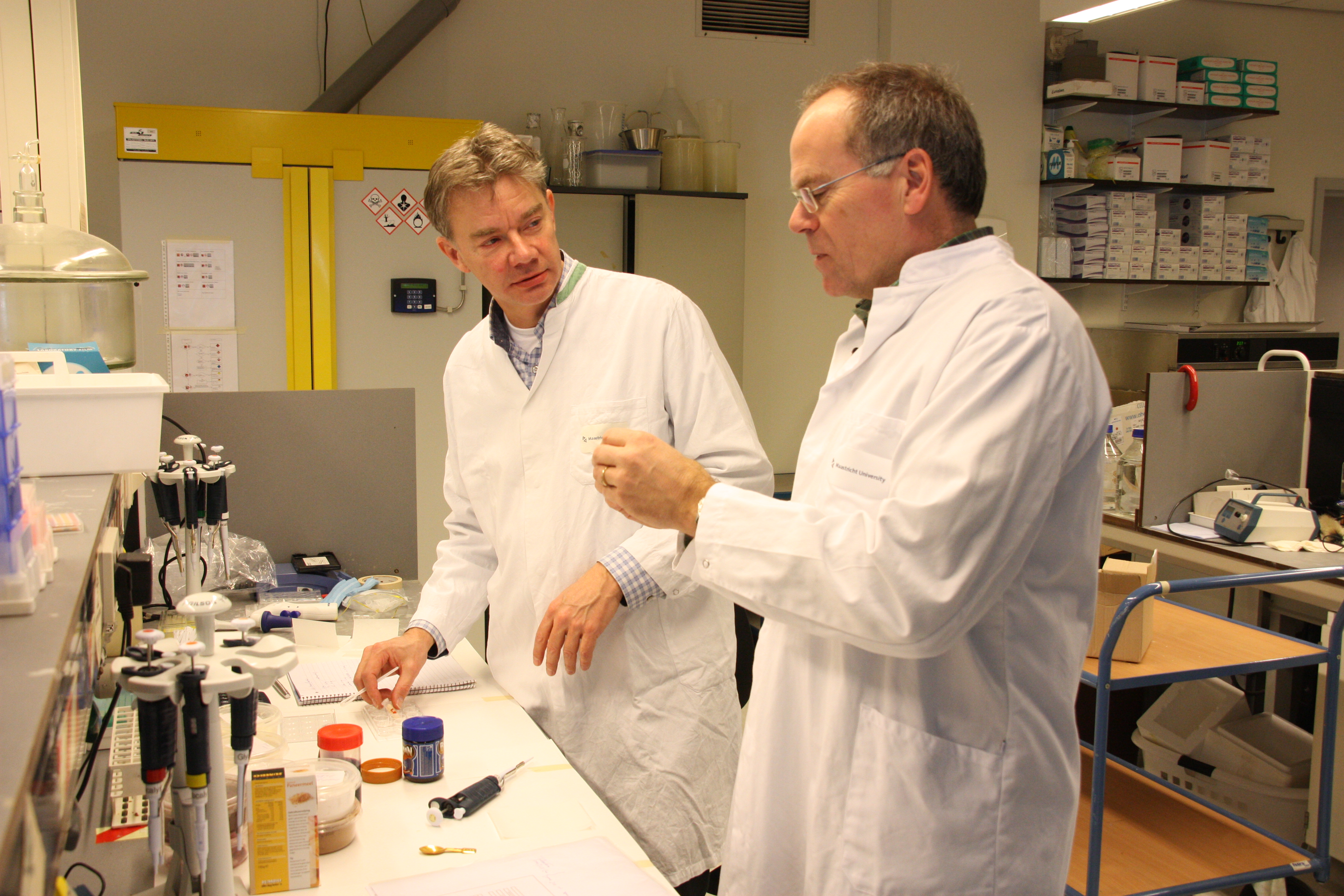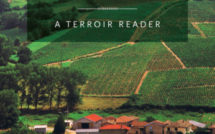

This is part of our special feature on Food, Food Systems, and Agriculture.
Since 2014, I have studied the future visions and research environments emerging as an increasing number of biotech start-ups attempt to produce what proponents refer to as “animal products without animals” (Datar et al., 2016). The basic idea underpinning such efforts is that culturing muscle cells to produce so-called “cultured,” “in vitro,” or “clean” meat without the need to rear livestock should allow meat-consumers to eat healthier, safer, and more sustainable meat products. For products such as egg whites, gelatine, or milk the same goals are to be achieved through utilizing genetically modified microbes in lieu of livestock.
From the very beginning, these entrepreneurial life science explorations have tied together a range of various academic and extra-academic actors, primarily throughout Europe and the United States. Cultured frog cells were served by bioartists Oron Catts and Ioanat Zurr at the 2003 L’Art Biotech exhibition in Nantes, while early meetings to discuss the prospects of cultured meat were held in Norway (2007 and 2008), and Sweden (2011). The hitherto most high-profile taste test took place in London in 2013, where a group of researchers led by Maastricht University vascular physiology professor Mark Post, and funded by Google Co-founder Sergey Brin, displayed a cultured beef burger. This group has also been active in putting together a new round of international conferences, running in Maastricht since 2015. Meanwhile, two NGOs, New Harvest and the Good Food Institute, have organized conferences and workshops in the US, primarily in California.
As I’ve followed researchers working within these projects to laboratories, offices, and workshops in Northern Europe and the US, I have in my bookshelf, alongside books on political ecology, animal agriculture, and technoscience, kept a short book on 1990s veganism and animal rights activism in Sweden. This is Magnus Linton’s (2000) Veganerna: en bok om dom som stör (The Vegans: a book on those who disturb). In this short essay, I weave together a discussion on the shift apparent between Linton’s reports of often illegal forms of activisms and cultured meat as embodying a new attitude to meat among (certain) vegans. In short, this new attitude signals a shift away from Linton’s story of veganism as a disturbing presence to much more of an eco-modernist emphasis on disruptive technologies and niche consumerism. Further, this is a shift that has brought together university researchers and biotech entrepreneurs with prominent animal advocates and meat producers in an attempt to re-evaluate what animal products are, could, and should become.
In his book, Linton chronicles how militant animal rights activists went from high-profile arsons targeting slaughterhouse lorries to releasing minks from mink farms,[1] to targeted intimidation attempts against those involved with animal testing. He describes how the emergence of a movement influenced by the UK-based Animal Liberation Front’s emphasis on causing economic damage disturbed and annoyed a wide range of established political actors. While some farmers viewed vegan activism as the acting out of confused middle class kids, left-leaning interests were instead troubled by how their political-rhetorical emphasis on liberation and oppression was re-purposed by movements sometimes hard to place on the political spectrum.
But Linton simultaneously describes a high-profile movement at a time when central actors therein still strategically shied away from issues that have since become much more of mainstream concerns. While Djurens Rätt, Sweden’s most high-profile animal rights organization, in the 1990s preferred to target fur rather than meat-consumption so as to not unnecessarily scare away potential allies, a concern with meat consumption has now become an often self-evident part of environmental-political discourse—j in Sweden and elsewhere (see for example UNEP, 2010; Gerber, 2013). As meat consumption’s environmental impacts have risen to prominence, emphasis comes to rely much less on Jeremy Bentham’s famous concern with whether (non-human) animals can suffer, than on a more recent question concerning whether they contribute to global warming and environmental degradation.
Almost twenty years after the publication of Linton’s short book, we are thus faced with a situation where particular issues regarded as potentially alienating also within animal rights movements have become mainstream. The title of a recent The Guardian article is telling in this context; “The unstoppable rise of veganism: how a fringe movement went mainstream.” Noting a 350 percent rise in the number of vegans in Britain between 2006 and 2016, Hancox herein remarks that Britain today witnesses a “new spirit of veganism as a lifestyle, rather than the cornerstone of a political worldview” and chronicles how “a tightly bound, activism-driven outsider community [has] become an accepted phenomenon in a matter of a few years” (Hancox, 2018). But despite such depictions of an increasingly prominent vegan or vegetarian trend, we witness a virtually unbroken increase in (absolute and per capita) global meat consumption. Today, and in an expected warmer future, the earth is quite literally shaped by this increase. With almost 60 billion slaughtered per year, the fossilized bones of domestic chicken has for example been identified as one of the physical evidences available to future geologists wanting to date the Anthropocene (or the “age of mankind”) as a proposed geological epoch (Carrington, 2016).[2]
Today, we consequently witness a focus (among vegans and other political actors) on industrial animal agriculture as an emblematic environmental problem alongside a more pronounced position for, and new forms of, veganism. The question is however just what there is an “unstoppable rise” of within the increased prominence of vegan lifestyles, and how cultured meat fits within this “unstoppable rise?” It is within an increased emphasis on animal agriculture as an environmental problem, and within an increased emphasis on eco-modernist veganism, that I will in the remainder of this essay place cultured meat. Alongside the shift from disturbance to disruption that I flagged above, this could also be seen as a shift from consumer boycott (abstain from meat, from fur, etc.) to a celebration of alternative commodities where the “new spirit of veganism” merges with a “spirit of indulgence” (Jönsson, 2016). Being vegan should, in other words, no longer necessitate anyone abstaining from consuming animal products. Instead, it should mean that they can soon consume new, “better,” versions of animal products.
Such a shift in the attitude to meat is, however, partly brought forward by key protagonists of an earlier meat-abstaining attitude. When the above-mentioned cultured beef burger was first displayed to the public, the well-known animal liberation philosopher Peter Singer immediately took an explicit stand for it. Basing his defense of meat-culturing efforts in a critique of animal agriculture’s environmental impact, and of factory farming as violating “basic ethical principles that extend beyond the boundary of our own species,” Singer (2013) concluded by stating that he doesn’t consider vegetarianism or veganism “an end in itself.” Rather, vegetarianism or veganism is “a means towards reducing both human and animal suffering, and leaving a habitable planet to future generations. I haven’t eaten meat for 40 years, but if in vitro meat becomes commercially available, I will be pleased to try it.” Similarly, displaying hopes for cultured meat, high-profile US NGO People for the Ethical Treatment of Animals (PETA) had, years before the prototype beef burger was first unveiled, promised $1 million to “the first laboratory to use chicken cells to create commercially viable in vitro (test tube) meat” in a competition that no laboratory actually ever entered during its six year duration (2008-2014).
Peter Singer and PETA’s responses illuminate how new technologies, or in light of the contemporary commercial unavailability of cultured meat perhaps, rather a belief in future technological developments, enables a kind of veganism that does not equate itself with a critique of meat per se. This meat-affirming version, moreover, is a kind of veganism behind which established animal agriculture interests do not necessarily mind getting. In 2017, agriculture behemoth Cargill, whose corporate activities include livestock-rearing as well as meat and poultry processing, invested in Bay Area-based “clean meat” start-up Memphis Meats. In early 2018 Cargill were joined by Tyson Foods, who expressed their investments in Memphis Meats as underscoring their “commitment to explore innovative, new ways of meeting growing global demand for protein” (Tyson Foods, 2018). Speaking at a Panel on entrepreneurial opportunities in rethinking meat organized by the aforementioned NGO The Good Food Institute, Tyson Foods Chief Sustainability Officer Justin Whitmore echoed the rhetoric of the start-ups today at the forefront of cultured meat research in underscoring that Tyson want to be part of the disruption rather than disrupted (Good Food Institute, 2018).
In other words, alternatives to animal agriculture no longer necessarily disturb established animal-agricultural interests. Instead, they can become part of the same disruption, emphasizing Schumpeterian creative destruction instead of more ostensibly political transformations. Tyson’s stand for their investments thereby, in a sense, place cultured meat as one of the latest additions to what Jesse Goldstein (2018) in his book on cleantech entrepreneurs calls “non-disruptive disruptions.” New production technologies, are to turn an environmental problem (meat consumption) into a solution, and thus enable the continuation of contemporary meat-intensive diets. Changes are to be as non-disruptive as possible for consumers wishing to continue to eat meat and for at least those animal-agricultural companies willing to be part of the shift from livestock-derived to “cultured” or “clean” meat. Throughout my research, I have repeatedly heard cultured meat proponents and researchers express their ambitions as partly about offering a service to established animal agriculture interests. Beyond enabling (post-)animal products to be healthier to consumers and better for the environment, the argument is that cell-culturing and other biotechnological interventions should enable the production of animal products to become much more reliable for producers, for example, through eliminating the risk of disease outbreaks now potentially forcing producers to prematurely slaughter livestock.
But it should be stated that far from all vegans share the techno-optimistic and meat-affirming approach that underpins cultured meat research and development. The shift that I underscore in this text does not in any way signal a complete break with earlier attitudes to meat-eating and consumption within vegan circles. Anarchist geographer Richard White (2017), for example, speaks of the observed rise of veganism throughout (parts of) the Global North as the prospering of a type of “commodified veganism.” As he frames the issue, the contemporary rise of veganism “serves as a perfect demonstration of the power of advanced capitalism to commodify the alternative by stripping out the radical praxis of veganism and repackaging this as an ‘alternative lifestyle choice’” (White, 2017:272). Meanwhile, scholars within the interdisciplinary Critical Animal Studies field have criticized the way that arguments for cultured meat embrace a particular kind of Western diet as virtually unchangeable. In making their case for cultured beef production as eventually inevitable Maastricht University in the press material that accompanied the famous 2013 cultured beef burger remarked that it would be “unrealistic to think about eradicating meat from the human diet in the future” since “[h]umans as a race have shown no sign of wishing to eat less meat” (Maastricht University, 2013). Increased meat consumption was thus outlined as a naturalized feature in a framing that smoothed over any possibility for demand side action. Years before this burger was served, John Miller (2012: 44), however, criticized how cultured meat, like existing meat substitutes, “tacitly affirms the cultural centrality of meat and its vital […] role in producing an ideology of human self-empowerment”. Similarly, Erica Fudge (2010: 161) around the same time argued that cultured meat revealed the “unwillingness to give up one of the things that makes us who it is that we think we are.”
As Miller’s critique exemplifies, questioning approaches that build from rather than question meat’s contemporary standing can extend also to a critique of plant-based meat substitutes. This is interesting, particularly against the background of how the contemporary rise of veganism is frequently associated with the ease ensured by the development of vegan products better able to mimic the taste and texture of animal products, and the increased market prominence of meat and dairy analogues. The UK development of the mycoprotein Quorn is a case in point, but even more so are more recent developments such as the “bleeding” burger produced by Impossible Foods. Cultured meat can in this sense be seen as such ambitions’ logical conclusion, enabling vegans to finally transfer from consuming an ever-improved range of substitutes to consuming what researchers and producers present as better versions of the real thing. Rebekah Sinclair (2016: 246) has however urged vegans to “think not just beyond meat, but beyond meatless meats.” To her, also plant-based meat substitutes are unable to become “really free of the animal they intend to substitute, and they therefore reproduce certain frameworks of intelligibility that keep animals edible even if they are not eaten” (Sinclair, 2016:230). An example pointed out by Sinclair is how plant-based products rely on references to animals in their names (such as Tofurkey). Answering Sinclair, Carol J Adams (2016), one of the most influential voices in making sense of meat culture during the last twenty-five years, however, sees potential in serving alternative products. Reflecting on the vegan BBQs she hosts in Dallas, she remarks that her guests eat such alternatives “without noticing anything until that moment of whiplash when they remember I am a vegan. Isn’t this the secret no one wants to admit? The lynchpin of the meal is replaceable and no one notices.” The centrality of meat would in that case not nearly be as self-evident as arguments for cultured meat frequently asserts. Is the lynchpin then instead any protein-rich, easily cooked, object?
As a number of scholars have noted, cultured (or “in vitro,” or “clean”) meat is, today, a confusing technology, shot through with ontological ambiguity (Stephens, 2013; Stephens & Ruivenkamp, 2016). What cultured meat eventually could become, and what cultured meat is today, are both uncertain. Moreover, in making sense of cultured meat in relation to (particular forms of) contemporary veganism, cultural and technological processes visibly entangle.[3] Cultured meat is not inserted into a pre-existing world. Rather, it contributes to shaping the world that it is inserted into, and in this contributes to reshaping particular vegan attitudes to animal-agricultural products. Would cultured meat become commercially available, at least some prominent vegan voices mean that abstaining from meat loses its self-evidence, potentially leading to a renewed necessity to ponder what the end point of veganism is. Should veganism, if cultured meat eventually becomes commercially available, be a food-political project geared at matching consumers with suitable commodities or, as Richard White (2017) suggests, rather be a project animated by a more radical political agenda extending beyond a critique of animal agriculture?
Erik Jönsson is a Senior lecturer in the Department of Social and Economic Geography, Uppsala University, and a researcher in the Department of Human Geography, Lund University. His research interests particularly concern the intersection of political ecology, science and technology studies, and future visions. Funded by the Swedish Research Council Formas (Grant 2013: 1510, Bypassing the beast: Exploring the political ecology of in vitro meat), he has since 2014 explored the research environments and future visions emerging around cultured meat and cellular agriculture.
Photo: Food Technician Peter Verstrate (left) and Professor Mark Post in the lab | Maastricht University
References.
Adams, C.J. (2016) Ethical Spectacles and Seitan-Making: Beyond the Sexual Politics of Meat – A Response to Sinclair. In: Donaldson, B & Carter, C. (eds.) The Future of Meat without Animals, London & New York: Rowman & Littlefield, pp. pp. 249-256.
Carrington, D. (2016) How the domestic chicken rose to define the Anthropocene, The Guardian, August 31.
Datar, I., Kim, E. & d’Origny, G. (2016) New Harvest: Building the Cellular Agriculture Economy. In: Donaldson, B. & Carter, C. (eds.) The Future of Meat without Animals, London & New York: Rowman & Littlefield, pp. 121-131
Fudge, E (2010) Why it’s easy being a vegetarian. Textual Practice 24(1): 149–166.
Gerber P.J., Steinfeld, H., Henderson, B. et al. (2013) Tackling climate change through livestock – A global assessment of emissions and mitigation opportunities. http://www.fao.org/docrep/018/i3437e/i3437e.pdf
Goldstein, J. (2018) Planetary improvement: cleantech entrepreneurship and the contradictions of green capitalism. Cambridge: MIT Press.
Good Food Institute (2018) Rethinking Meat: Entrepreneurial Opportunities. https://www.gfi.org/rethinking-meat-entrepreneurial-opportunities
Hancox, D. (2018) The unstoppable rise of veganism: how a fringe movement went mainstream, The Guardian, April 1.
Jasanoff, S. (2004) States of knowledge: the co-production of science and the social order. London: Routledge
Jönsson, E. (2016) Benevolent Technotopias and Hitherto Unimaginable Meats: tracing the promises of In Vitro Meat. Social Studies of Science 46(5): 725-748
Linton, M. (2000) Veganerna: en bok om dom som stör. Stockholm: Atlas.
Maastricht University (2013) Background. Maastricht University Press Material.
Malm, A. & Hornborg, A. (2014) The geology of mankind? A critique of the Anthropocene narrative. The Anthropocene Review 1(1): 62-69.
Miller, J. (2012) In vitro meat: Power, authenticity and vegetarianism. Journal for Critical Animal Studies 10(4): 41–63.
PETA (2014) PETA’s ‘in vitro’ chicken contest. http://www.peta.org/features/vitro-meat-contest/
Saraiva, T. (2016) Fascist pigs: technoscientific organisms and the history of fascism, Cambridge: MIT Press.
Sinclair, R. (2016) The Sexual Politics of Meatless Meat: in(Edible) Others and the Myth of Flesh without Sacrifice. In: Donaldson, B. & Carter, C. (eds.) The Future of Meat without Animals, London & New York: Rowman & Littlefield, pp. 229-248.
Singer, P. (2013) The world’s first cruelty-free hamburger, The Guardian, August 5.
UNEP (2010) Assessing the Environmental Impacts of Consumption and Production: Priority Products and Materials. http://www.unep.fr/shared/publications/pdf/dtix1262xpa-priorityproductsandmaterials_report.pdf
Stephens, N. (2013) Growing meat in laboratories: The promise, ontology, and ethical boundary work of using muscle cells to make food. Configurations 21(2): 159–181.
Stephens, N. & Ruivenkamp, M. (2016) Promise and Ontological Ambiguity in the In vitro Meat Imagescape: From Laboratory Myotubes to the Cultured Burger. Science as Culture 25(3): 327-355.
Tyson Foods (2018) Tyson Foods Invests in Cultured Meat with Stake in Memphis Meats. https://www.tysonfoods.com/news/news-releases/2018/1/tyson-foods-invests-cultured-meat-stake-memphis-meats
White, R.J. (2017) Capitalism and the Commodification of Animals: The Need for Critical Vegan Praxis, Animated by Anarchism! In: Nibert, D. (ed.) Animal Opression and Capitalism. Santa Barbara: Praeger, pp. 270-293.
[1] When 20,000 minks in 1998 were released from a farm in Nordmaling, Linton lists this as the biggest such action in the world.
[2] The Anthropocene might however be a problematic label for this geological epoch, given the vast differences in environmental impacts between people and groups of people (see Malm & Hornborg, 2014).
[3] As many science and technology scholars have pointed out, cultural and technological processes can hardly be separated. See for example Jasanoff, Sheila (2004) States of knowledge: the co-production of science and the social order. London: Routledge, or Saraiva, Tiago (2016) Fascist pigs: technoscientific organisms and the history of fascism, Cambridge: MIT Press.
Published on September 5, 2018.




